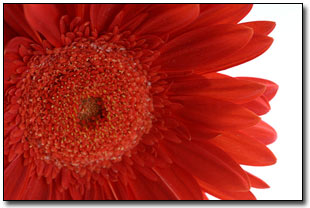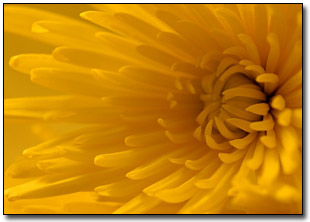|
If, like me, you enjoy close up photography, you will appreciate that light and
shade play a significant role in the overall look of your images. I have recently
started to explore this aspect of photography and have seen or read about the wealth
of equipment that is available to harness light and create different effects.
However, the sophisticated 'extras' come at considerable cost, so I looked at what
is on hand around the home that could be adapted to mimic various effects. The
following two examples are results from my easily set up, homespun experiments:
Lightbox
For this Gerbera image, I wanted the light to be even from beneath and around the
flower to minimize shadow and let the shades and textures of the petals come through. The set up consisted of:

- Two small tables of equal height placed beside a window where there was good
natural light.
- A large (A3 sized) opaque white plastic box, of the type used for freezer storage,
upturned and balanced across the tables.
- A couple of sheets of white paper on top of the box to further diffuse the light.
- Halogen 'swan neck' desk lamp beneath the tables with the light angled upwards
- The flower placed in a vase which was located so that the bloom was almost
directly above the light source.
Light tent
I read about light tents and realized that I had one... or at least an item easily
adapted to act as one. The set up for shooting this Yellow Chrysanthemum was as
follows:

- Cylindrical white nylon collapsible laundry container. This is absolutely ideal for the purpose.
- The container laid on its side on a table with a book either side to ensure it did
not roll.
- A piece of white polystyrene packing material placed inside with a couple of
sheets of paper on top to create a level 'floor' for the blooms.
- Light again supplied by the swan neck lamp angled to shine from the side, I
particularly like the resultant warmth of the light as it was diffused by the
'tent'.
Even simpler than the foregoing is the idea of a white 'sweep' that is most
effective for shooting flowers with a soft, even background. This is achieved just
by placing a sheet or two of A3 paper on a windowsill and anchoring the top if
necessary with a little blue tack, then laying the bloom along the curve of the
paper.
So far, I have concentrated on the white end of the spectrum, but I expect that
equally effective results could be achieved by using different colors for
backgrounds, but that is another whole new area to explore!
| 
